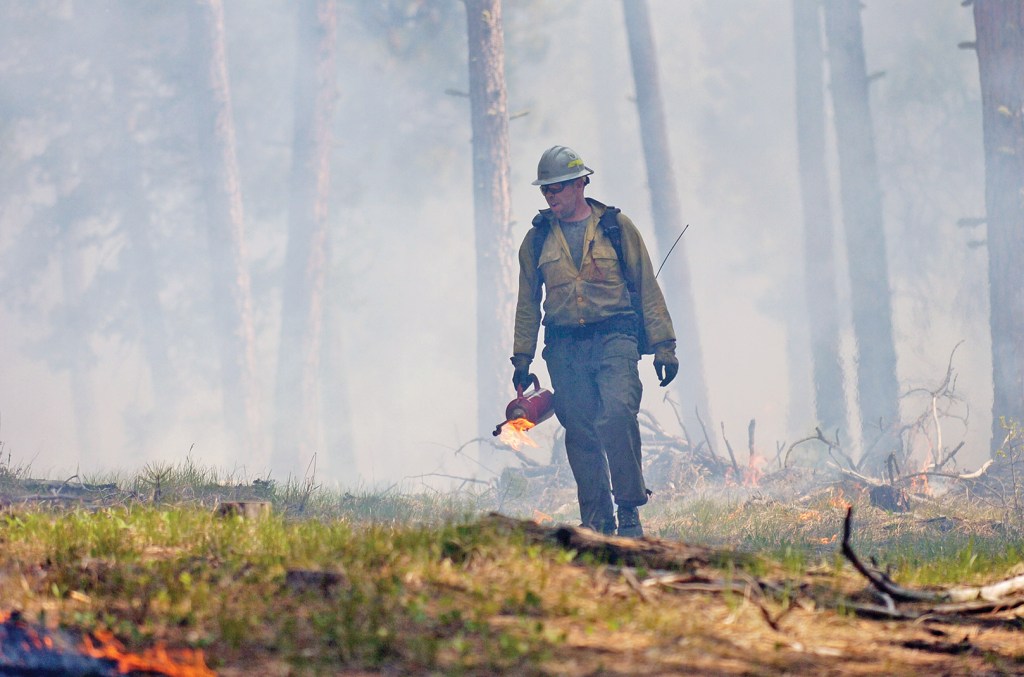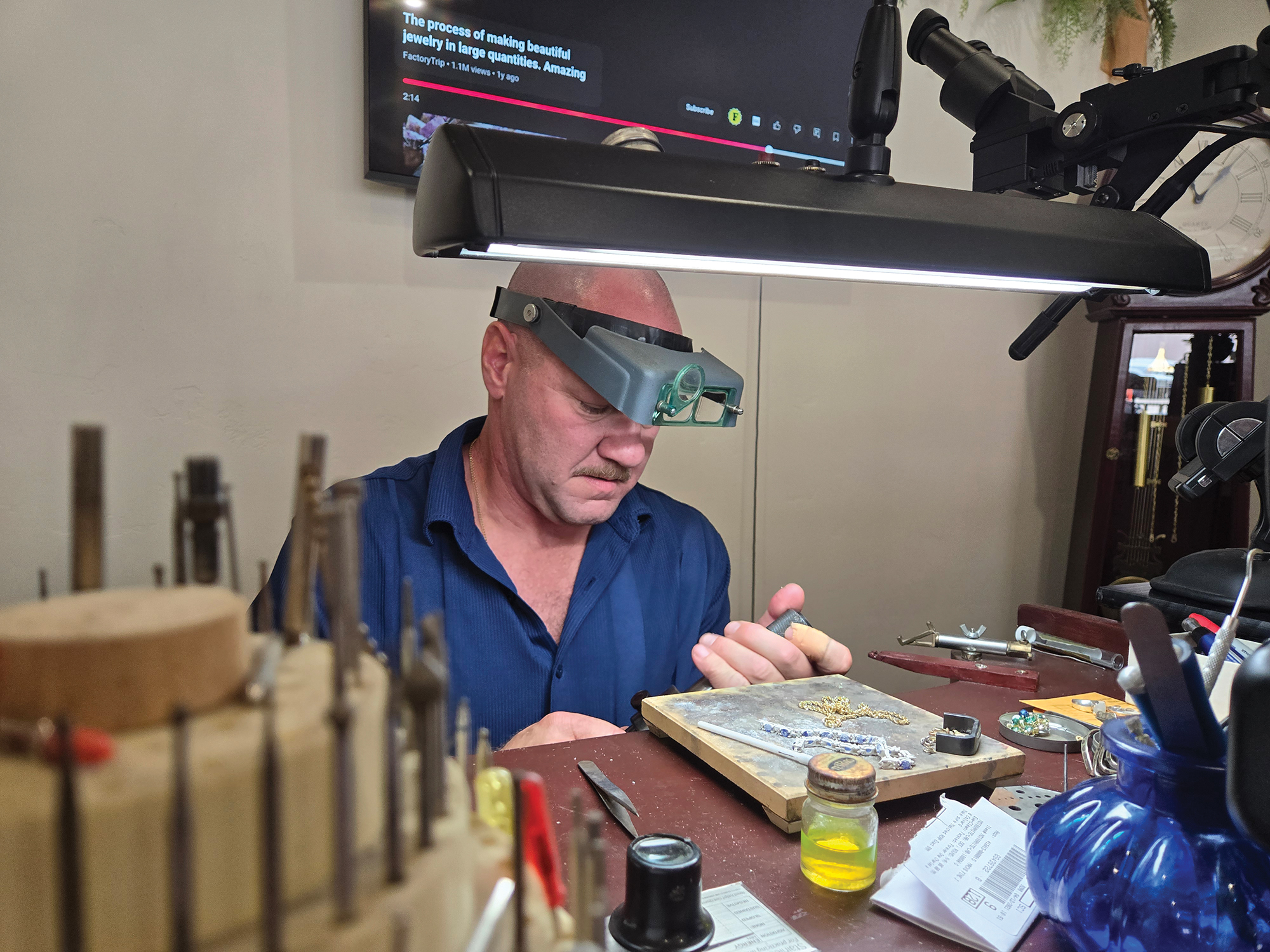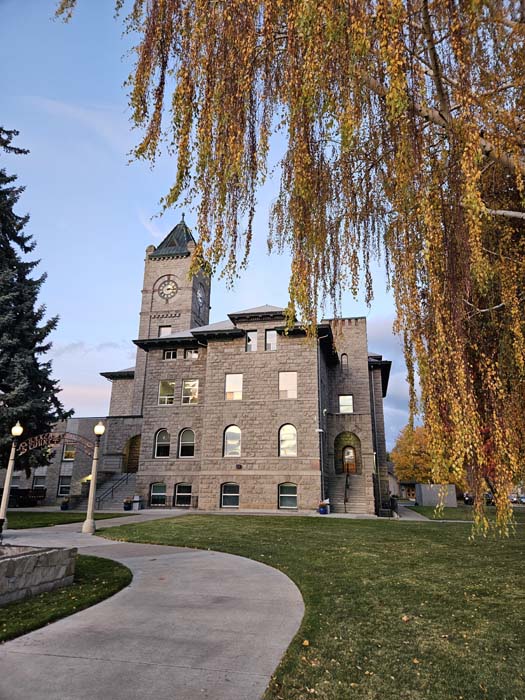Burn now, not later
Published 12:25 pm Monday, May 16, 2016

- S. John Collins/Baker City HeraldDrew Barr walks out of the smoke and ground flames on a prescribed fire April 18 near Baker City.
“It’s better to light ’em instead of fight ’em.”
Willy Crippen was talking Monday about prescribed burns and how they can help to prevent catastrophic wildfires.
Crippen is the fire management officer for the Wallowa-Whitman National Forest’s Burnt-Powder Fire Zone.
He said the goals of prescribed burning in forests are to reduce or eliminate fuels that can contribute to catastrophic wildfires, as well as improve forest health.
“We’re trying to return fire to the ecosystem,” Crippen said.
On Monday, 25 firefighters from the Forest Service and the Baker City Fire Department ignited the ground on about 40 acres near the archery range in Washington Gulch, about five miles west of Baker City.
Crippen and Assistant Fire Manager Francis Tyler supervised the burn, which is just a small part of about 2,400 acres destined for prescribed burning over the next several years on Forest Service land adjacent to Baker City’s 10,000-acre watershed.
The city obtains its drinking water from 11 streams and springs within that forested area, most of which the Forest Service manages.
One of the main purposes of these particular prescribed burns is to create a buffer of healthy, fire-resistant forest around the watershed. That diminishes the chance of severe wildfires burning into the watershed and potentially constricting the city’s water supply.
Protecting private land in the area is another goal.
“This is classified as a Type 1 prescribed burn because of its proximity to private lands,” Crippen said Monday. “That’s the highest complexity prescribed burn.”
That complexity called for the use of five wildland firefighting engines, with a bulldozer on standby.
The burn unit was contained by unused roads and hand-dug fire lines.
Using drip torches — containers of a gas/diesel mixture that dispense and ignite the mixture as it flows out of a flaming nozzle — firefighters set fire as they traversed a hillside carpeted with ponderosa pine needles.
Starting at the top of the burn unit, they moved across the hillside — 10 to 15 feet apart — each creating a line of flames that quickly spread and consumed the thick mat of pine needles, dead and down trees and even green brush and saplings.
With smoke thick in the air, a crackling whoosh could occasionally be heard as small trees ignited and were quickly consumed by flames.
“Those little trees go up very quickly,” Crippen said.
Other firefighters monitored the fire from the edges to ensure it did not escape the perimeter.
Crippen said conditions have to be just right for a prescribed burn to be successful.
There is a fairly narrow window of time in the spring between when the snow melts and “green-up” — when vegetation leafs out substantially.
“After green-up, it doesn’t burn very well,” Crippen said.
This spring has been a good one for prescribed burning, he said.
Moisture levels in the fuels have to be low enough for it to ignite and burn well.
Spring rains can halt planned burning.
But other weather factors can stop burning on a daily basis.
The area around the archery range, which was selectively logged in 2002, had been slated for prescribed burning the past several years.
But weather conditions thwarted the burning every year.
Until Monday.
Weather was mostly favorable, but it did put a damper on the day’s burn.
Crippen had hoped to burn 80 acres, but crews were able to do about half that area because favorable conditions predicted by the National Weather Service did not materialize.
Crippen said the Forest Service works very closely with the Weather Service and the Oregon Smoke Management Service to ensure that populated areas, such as Baker City, aren’t often inundated with smoke from prescribed burning.
“We’re trying to avoid putting smoke into the valley,” he said. “Smoke management is one of the most complex parts of the burn.”
See more in the April 20, 2016, issue of the Baker City Herald.






